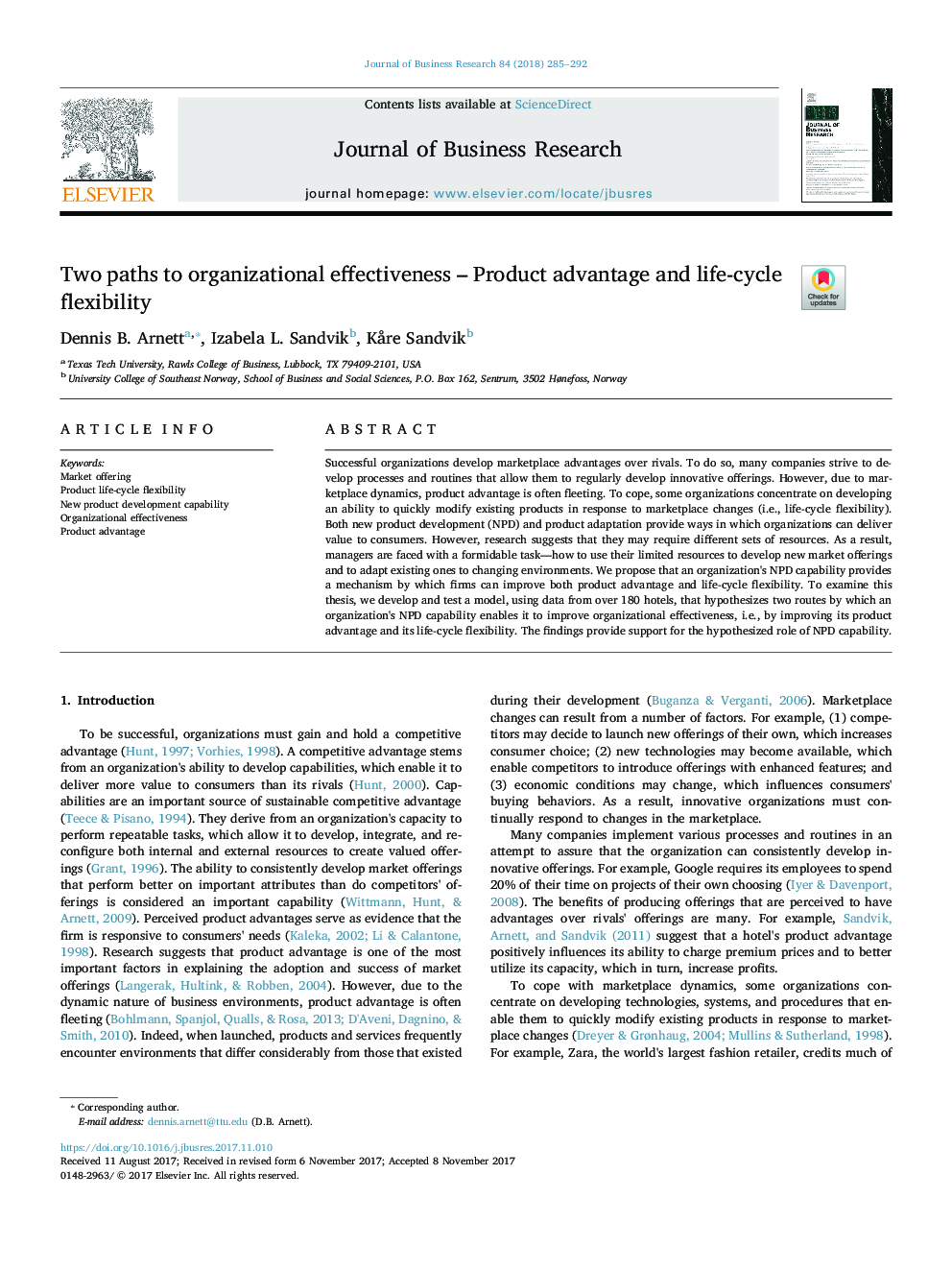| Article ID | Journal | Published Year | Pages | File Type |
|---|---|---|---|---|
| 7425483 | Journal of Business Research | 2018 | 8 Pages |
Abstract
Successful organizations develop marketplace advantages over rivals. To do so, many companies strive to develop processes and routines that allow them to regularly develop innovative offerings. However, due to marketplace dynamics, product advantage is often fleeting. To cope, some organizations concentrate on developing an ability to quickly modify existing products in response to marketplace changes (i.e., life-cycle flexibility). Both new product development (NPD) and product adaptation provide ways in which organizations can deliver value to consumers. However, research suggests that they may require different sets of resources. As a result, managers are faced with a formidable task-how to use their limited resources to develop new market offerings and to adapt existing ones to changing environments. We propose that an organization's NPD capability provides a mechanism by which firms can improve both product advantage and life-cycle flexibility. To examine this thesis, we develop and test a model, using data from over 180 hotels, that hypothesizes two routes by which an organization's NPD capability enables it to improve organizational effectiveness, i.e., by improving its product advantage and its life-cycle flexibility. The findings provide support for the hypothesized role of NPD capability.
Keywords
Related Topics
Social Sciences and Humanities
Business, Management and Accounting
Business and International Management
Authors
Dennis B. Arnett, Izabela L. Sandvik, KÃ¥re Sandvik,
